Dreamy and soporific, The Man Who Fell To Earth is essentially about a spaceman coming to Earth on a mission to rescue his drought-stricken planet, by the by making his fortune bringing new technology to earth. The self-developing 35mm film seems charmingly old-fashioned now, but it’s about so much more than that. It’s about apathy and corruption of the filthy rich. It’s about isolation and loneliness. It’s about feeling like you don’t belong. There is something deliberately otherworldly about this film, and it haunts whoever sees it. On his Earth mission Thomas Jerome Newman (played by David Bowie) gets distracted essentially by sex and alcohol compliments of Mary-Lou (excellently played by Candy Clark) who pours him his first ever Gin and Tonic and gives him a good seeing to. What starts out as his innocent mission for water and her innocent mission for love, corrupts them, the new world siphoning away their innocence, resulting in a classic case of identity crisis.
Prior to filming The Man Who Fell To Earth, David Bowie had been touring America to great avail, winning over the US public and topping the charts with the album Young Americans, sealing his good name as an official, rock-star, legend (he had already conquered Britain with Ziggy years before). However, David was feeling a little fragile, having finally achieved the success he was after, he was tired from all that touring, and all the rock ‘n’ roll activity that goes along with being a transatlantic superhero-musician in the mid-70’s. He gave up touring in ‘75 stating, “I’ve rocked my roll. It’s a boring dead end. There will be no more rock ‘n’ roll records or tours from me. The last thing I want to be is some useless fucking rock singer.” And it was then he went on to change things up a bit, and star in a feature film The Man Who Fell To Earth.
Today I have the pleasure of talking to the two people who are responsible for David Bowie’s look in The Man Who Fell To Earth. May Routh created the beautiful costumes and Martin Samuel is responsible for that red, chic shock of hair.
I walk into Studio Canal HQ to be greeted by Mary (Martin Samuel’s wife), while I’m waiting we start flicking through old contact sheets with 100’s of photos of the cast and crew on set. Candy Clark caught wincing on camera while Martin lavishes her with hair spray. David Bowie sat peacefully with his little boy on his lap. These are evocative of family photos, Mary tells stories of life on set back then and it sounds like they were a sort-of makeshift family out there in the New Mexico Desert. I’m called in to meet May and Martin and a little scurry of butterflies hits me in the gut, these people are real artists and they have that air of strident self belief yet both remain warm and approachable; this is what I found out about what it was like to work on the iconic film…
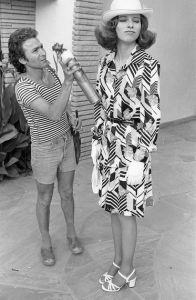
Me: What were you doing before you got the call from the director to work on this film? What got his attention, how did you get the gig?
Martin: It was early on in my career, I’d just done Stardust with David Essex and a film with a group called The Slade, directed by Richard Longcraine, I’d done bits and bobs of advertising, a film with Tony Scott… mainly small English productions and hadn’t really travelled that much, and then got called literally in the middle of the night from Linda DeVetta, the make up artist (for TMWFTE), she was in New Mexico and wanted to find out if I was interested and of course I jumped on it. Was sent the script, spoke to Nic (Roeg) and within a week I was on a plane and out.
May: I was in the fashion industry working as a fashion illustrator, I gave it up in the 60’s and I went on to be an assistant to a costume designer. My third job as an assistant I worked on a film called The Three and The Four Musketeers (two films, 1973 & 1974 respectively) and the costume designer Yvonne Blake asked me to go work with her in Spain, went to Spain, fell in love with the production designer Brian Eatwell, and then we both decided to travel to America and try our luck there. We got to LA and we were just about starving when Brian, who had worked with Nic before on two jobs, actually got this job. But once we got it, it still didn’t have the green light, so the thing is, it got to the state that I was really panicked that we were going to be in debtor’s court or something, then we got the phone call, “The deal’s been done, the film will be made with British Lion…” and I thought I can’t believe this is happening, we’re not going to be deported, I just couldn’t get over the sheer thing, and of course it was like, with David Bowie, I was just absolutely pulverised. It was just magic.
Me: May, The Man Who Fell To Earth is a Sci-Fi film but it’s fairly understated in the sense that there is only one space suit, and the rest is chic lines and shapes. Is that because David Bowie himself had such a distinct physical look, or was that something the director imposed or was that your interpretation?
May: These are the kind of things that are almost joint decisions, just sitting down and talking through. Obviously David Bowie had a very strong influence but also it was to work out what somebody coming from another planet, who had to look totally ordinary so that he didn’t stick out, like a business man. Because he’d come from another planet we put up things like he was weightless therefore he would probably bump into things so underneath his suit he’d be wearing protective clothing, like stunt pads and almost medical gear underneath, so that one time you see him, not fully naked, but undressed in a medical chair he’s wearing his underclothes. Whether anybody gets the fact that they are supposed to be protecting him, I don’t know, but it (that subtext) was there. Obviously he was very thin, and we wanted to go with a look of English boy’s school, a simple look, and the shirts that we got on the high street in Albuquerque came from Macy’s boys department because he wore a size 18 boys because he was so thin. His suits were made by a girl called Ola Hudson who’d worked with David before, so he was content with her making the actual suits, they were all made of silk, everything he wore was soft so the clothes didn’t injure him.
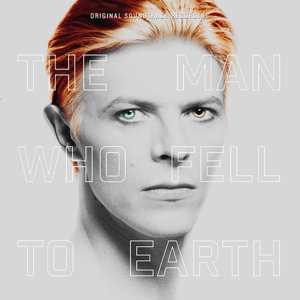
Me: Martin, The shocking orange hair is iconic, where did that come from, what was the inspiration for that?
Martin: The inspiration was David in as much as I was instructed before that he wanted that colour and it was a specific brand, he knew the colour, a particular colour by Schwarzkopf. So I took a bunch of that stuff with me, and then we met the first time as soon as I got there, we had a 2 hour session blending the colours, the blonde and doing the hair cut. That was our first meeting and first collaboration. Nic came in and loved the whole thing. He wanted to make sure the hair would never jump out from his neck, the cut would be so perfect, so I used to cut it every 3 days or so, to keep everything in check. Nic was absolutely obsessed, that if he was shooting a scene and was shooting from the side that the hair couldn’t touch his collar. I was constantly on set grooming grooming grooming him. That’s really how the look developed. The roots would come through and we’d do the colour every 2 – 3 weeks. Nic was very fussy about hair for all the characters, especially her (Mary Lou’s) specific progression of looks and aging, her hair takes you on a journey; she needed wigs to be made. There was a lot of running the whole department, all the characters, Buck Henry had a progression of 3 different hair lace appliances to representing the thinning of his hair, to show his ageing process. It was a very busy busy show.
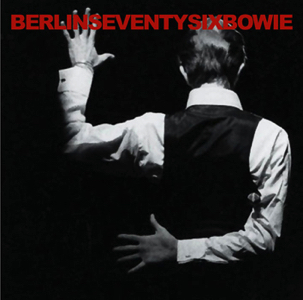
May: But also the thing is that David Bowie’s character Mr Newton, actually stays exactly the same, he never ages, so you have to show that other people were ageing around him and he always stayed perfectly beautiful.
Martin: And of course there is the sequence with the alien special effects make up and that was a company who came in specially to do that, with all the pieces and appliances already made. He was brought in on a bed asleep at 4 in the morning, he was so controlled David, he kept himself asleep the whole time they would be working on his body, blanking out all the stuff. It’s all terribly involved the edges and the plastics, the body took so very long, the nails, nipples, ankles all of that, and then we’d wake him up and Linda would do his facial make up, and for that scene I arranged his hair under a bald cap. And then he’d go to the loo and then have this all finished off (he gesticulates to his crotch).
Me: So that was like, no water for him that day.
Martin: No because he’d shoot for quite a few hours and not be able to go, to do so would create so much time lost on set.
Me: You never think of that when you’re watching a film.
May: I think we did that for about a week or 5 days or something.
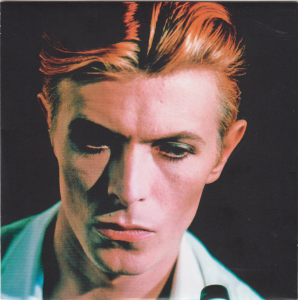
Me: I wondered did the New Mexico setting affect your choices? The fabrics you used? Or did the hair dry out?
May: It was shot in New Mexico but actually it was supposed to be somewhere that was anonymous. Mountains, water, it was supposed to be the whole of America, he was travelling. This one scene where he arrives in a limo from New York and the driver Tony Mascia ended up being in the film because he was his (David’s) actual chauffer. And he actually wore his own clothes because I had never seen three-piece polyester suits in maroon and different colours. I mean, they could stand up on their own; they were creased and stiff!
Martin: David had a big phobia about flying so Tony Macia drove him all over America, he had this Winnebago as well that he would live in… when David was crossing America from New York to LA or wherever he would never fly. He had a whole thing about flying. And even when he still had that phobia, he told us the story of how he took his daughter to England he made the exception that they would all fly, so they flew and broke his never flying rule. That was right near the end of his life.
Me: So one more question, on the album Low, the cover looks like he just stepped off the set (of TMWFTE). Were you involved in that shoot?
Martin: Yes I was, yes…And then I did the Station to Station tour, because he kept that look for those two albums and I travelled with him for maybe a year… until Berlin, and then he (David Bowie) said, right that’s it. “Cut it off!”
Just as Martin said “Cut it off,” as if she had some kind of 6th sense, Zoe the press lady pops in to deliver the message that my time is up.
As I leave Mary, Martin’s wife, is describing the Station to Station tour and how overwhelming it was to look out at the audience and see all the flame red hair with bright white streaks staring up at the stage, feeling a sense of pride that her Martin was responsible for that look, the iconic look that defined Bowie for The Man Who Fell To Earth and for 2 whole albums after that.
I leave Studio Canal HQ feeling overwhelmed by a sense of creative calm. These two tastemakers made there mark back then, but they are not nostalgic, they are living in the now and still doing their thing. It’s an inspiration.

The restored version of The Man Who Fell to Earth is in UK cinemas on 9 September, and then on DVD and Blu-ray on 24 October (2016)

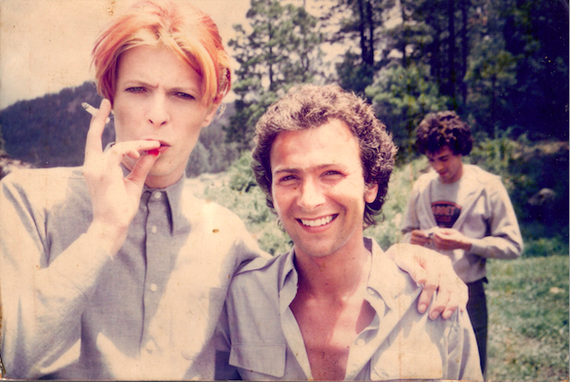
5